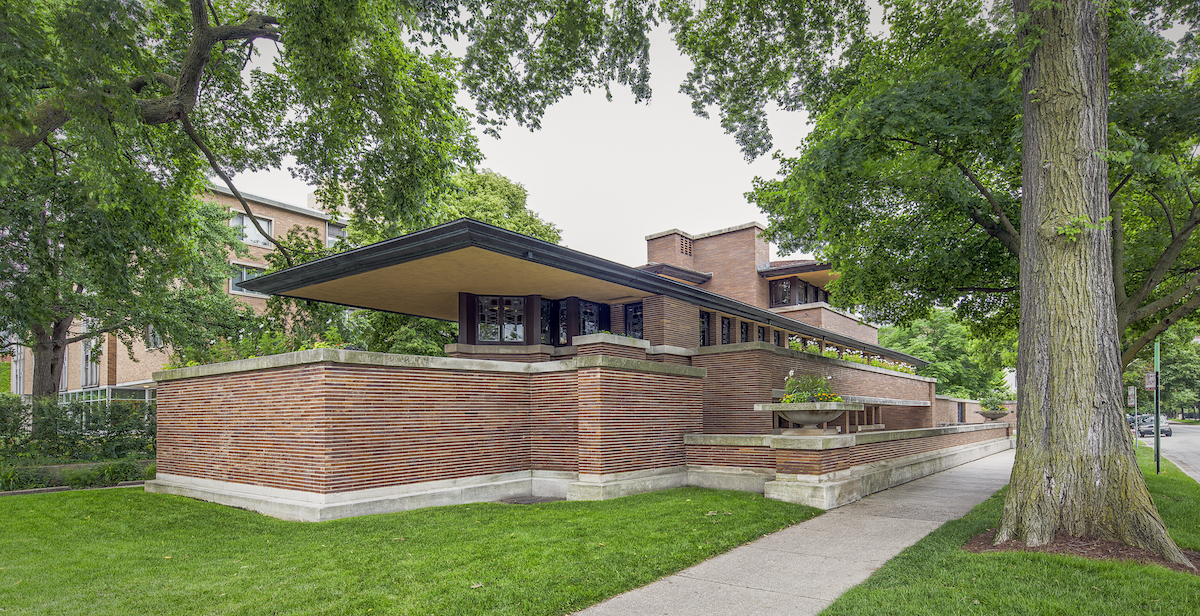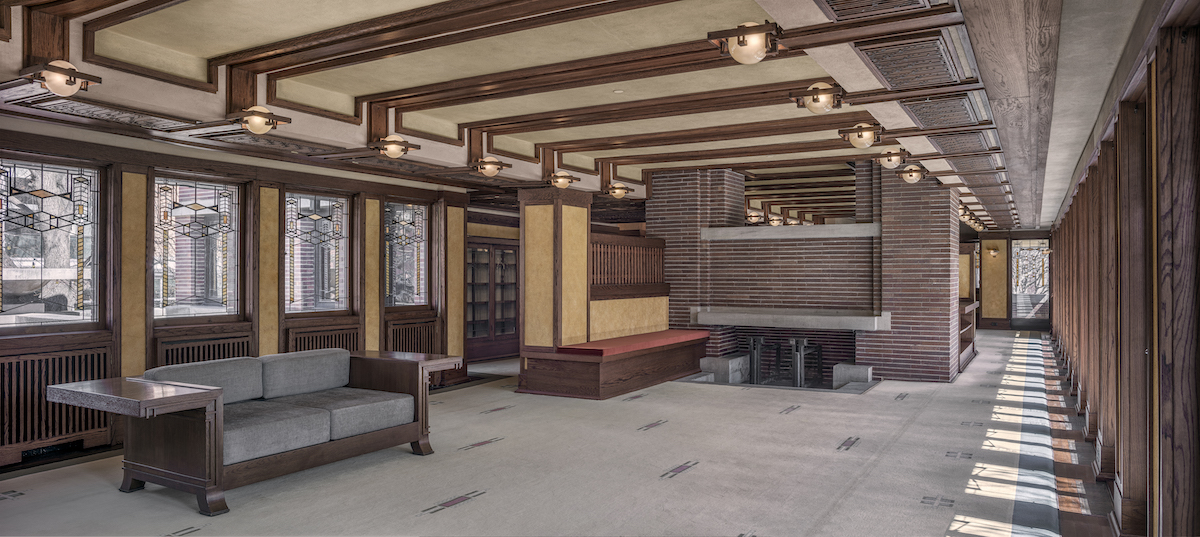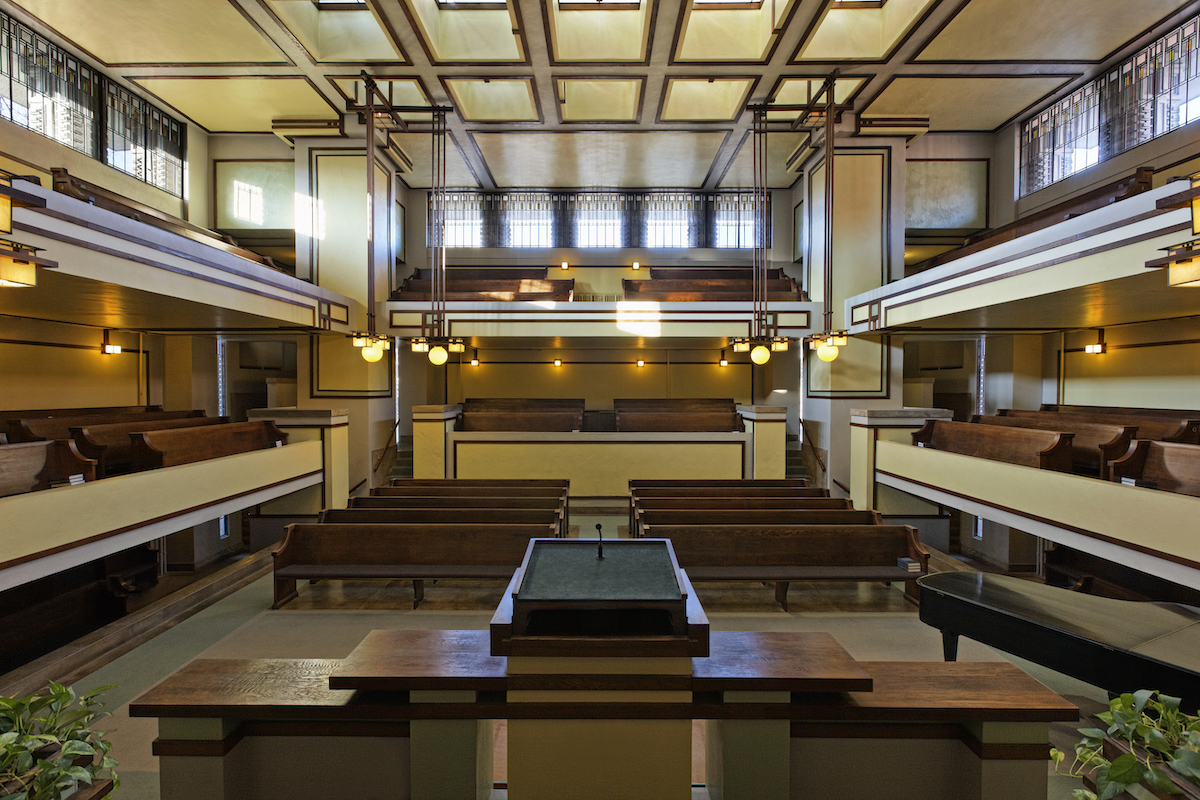During the 43rd session of the World Heritage Committee, currently taking place in Baku, Republic of Azerbaijan (June 30 - July 10, 2019), the World Heritage Committee named eight projects by Frank Lloyd Wright to the UNESCO World Heritage List.
The designation, officially named “The 20th century Architecture of Frank Lloyd Wright,” includes signature works designed by the architect during the first half of the 20th century. They are:
• Aline Barnsdall Hollyhock House (Los Angeles)
• Fallingwater (Mill Run, Pa.)
• Frederick C. Robie House (Chicago)
• Herbert and Katherine Jacobs House (Madison, Wis.)
• Solomon R. Guggenheim Museum (New York)
• Taliesin (Spring Green, Wis.)
• Taliesin West (Scottsdale, Ariz.)
• Unity Temple (Oak Park, Ill.)
On making the selection, the World Heritage Committee stated: “These buildings reflect the ‘organic architecture’ developed by Wright, which includes an open plan, a blurring of the boundaries between exterior and interior, and the unprecedented use of materials such as steel and concrete. Each of these buildings offers innovative solutions to the needs for housing, worship, work or leisure. Wright's work from this period had a strong impact on the development of modern architecture in Europe.”
In Chicago, the UNESCO designation coincides with the Frank Lloyd Wright Trust’s announcement of a new Frank Lloyd Wright Visitor and Education Center. The trust owns and maintains Wright’s Home and Studio in Oak Park, Ill., and operates public tours and programs at five Chicago area historic sites, including Unity Temple (1905-08) and Robie House (1908-10).
“This UNESCO designation firmly establishes Wright’s place on the international stage of modern architecture,” said Celeste Adams, President & CEO of the Frank Lloyd Wright Trust.
Wright joins pioneers of modern architecture already inscribed on the prestigious list, including Gerrit Rietveld, Walter Gropius, Mies van der Rohe, Le Corbusier, Oscar Niemeyer and Lucio Costa. There are more than 1,000 World Heritage sites around the world, and the group of Wright sites is now among 24 sites in the U.S.
 Frederick C. Robie House, Chicago. Photo: Tim Long, courtesy Frank Lloyd Wright Trust
Frederick C. Robie House, Chicago. Photo: Tim Long, courtesy Frank Lloyd Wright Trust
 Frederick C. Robie House, Chicago. Photo: James Caulfield, courtesy Frank Lloyd Wright Trust
Frederick C. Robie House, Chicago. Photo: James Caulfield, courtesy Frank Lloyd Wright Trust
Related Stories
| Dec 29, 2014
From Ag waste to organic brick: Corn stalks reused to make construction materials [BD+C's 2014 Great Solutions Report]
Ecovative Design applies its cradle-to-cradle process to produce 10,000 organic bricks used to build a three-tower structure in Long Island City, N.Y. The demonstration project was named a 2014 Great Solution by the editors of Building Design+Construction.
| Dec 29, 2014
14 great solutions for the commercial construction market
Ideas are cheap. Solutions are what count. The latest installment in BD+C's Great Solutions series presents 14 ways AEC professionals, entrepreneurs, and other clever folk have overcome what seemed to be insoluble problems—from how to make bricks out of agricultural waste, to a new way to keep hospitals running clean during construction.
| Dec 29, 2014
HealthSpot station merges personalized healthcare with videoconferencing [BD+C's 2014 Great Solutions Report]
The HealthSpot station is an 8x5-foot, ADA-compliant mobile kiosk that lets patients access a network of board-certified physicians through interactive videoconferencing and medical devices. It was named a 2014 Great Solution by the editors of Building Design+Construction.
| Dec 28, 2014
Robots, drones, and printed buildings: The promise of automated construction
Building Teams across the globe are employing advanced robotics to simplify what is inherently a complex, messy process—construction.
BIM and Information Technology | Dec 28, 2014
The Big Data revolution: How data-driven design is transforming project planning
There are literally hundreds of applications for deep analytics in planning and design projects, not to mention the many benefits for construction teams, building owners, and facility managers. We profile some early successful applications.
| Dec 28, 2014
AIA course: Enhancing interior comfort while improving overall building efficacy
Providing more comfortable conditions to building occupants has become a top priority in today’s interior designs. This course is worth 1.0 AIA LU/HSW.
| Dec 28, 2014
6 trends steering today's college residence halls
University students want more in a residence hall than just a place to sleep. They want a space that reflects their style of living and learning.
| Dec 28, 2014
Using energy modeling to increase project value [AIA course]
This course, worth 1.0 AIA LU/HSW, explores how to increase project value through energy modeling, as well as how to conduct quick payback and net present value studies to identify which energy strategies are most viable for the project.
| Dec 28, 2014
The lowdown on LODs: Bringing clarity to BIM
These days, BIM is par for the course across most facets of design. But a lot of the conversation surrounding BIM still lacks clarity due to ambiguous terminology, a lack of clear-cut guiding illustrations, and widely varying implementation, writes GS&P's John Scannell.
| Dec 28, 2014
The future of airport terminal design: destination status, five-star amenities, stress-free travel
Taking a cue from the hospitality industry, airport executives are seeking to make their facilities feel more like destinations, writes HOK's Richard Gammon.

















